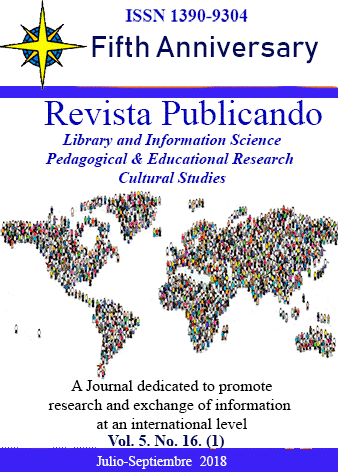Resumen
The article is devoted to the consideration of the Bulgarian problem in the historiography of the Russian Empire of the 19th century. Ethnic Ruthenian Yuri Venelin became interested in the Danube Bulgarians during his stay in Chisinau (modern Moldova) and for the first time tried to give a complex social-cultural, ethnographic and historical description of this people. From the point of view of Venelin, Bulgarians, like all Eastern Europeans peoples, were Slavs by origin, while the Volga Bulgars were Muslim people and were not associated with them genetically but have received their name for their main city, Bulgar. Venelin”™s theory almost did not rise any polemics in the Russian printed press; however, it was sought by the Ministry of Foreign Affairs of the Russian Empire and had an impact on the doctrine of Pan-Slavism. Kazan nobleman Andrei Likhachev gained fame as a collector of art and amateur archeologist, his ancestral estate was located at the distance of 25 km from the ruins of the Bulgar on the Volga. Likhachev got a degree in natural sciences, but his interest in numismatics led to the study of the Arabic and Persian languages. On the material of Bulgar coins Likhachev established the sequence of Bulgarian rulers and proved the Turkic origin of Bulgars; he considered them one of the Uighur tribes. However, for a number of reasons, scholars of Kazan University remained on the positions of the Slavic origin of Bulgars. Likhachev”™s book on the history of the Volga Bulgaria remained unpublished. In this paper we use the biographical and comparative research methods. The article is intended for experts in the history of science and Asian and African studies, as well as the history of relations of the Russian Empire with the states of the Balkans and Central Asia in the 19th century.
Referencias
Mann, Thomas L., et al., Biographical directory of anthropologists born before 1920, Chicago: Garland Publ, 1988.
Venelin, Yu. I., The ancient and modern Bulgarians in their political, national and religious relations with the Russians, Vol. 1, Moscow: University press, 1829. (In Russian)
Nazipova, G.R., Izmaylova, S.Yu., Kazan Antiquarium. Kazan: Foliant publ, 2006. (In Russian)
Rudenko, K.A., “Сreative laboratory of A.F. Likhachev: from a collector to a scientist”, Uchenye Zapiski Kazanskogo Universiteta. Seriya Gumanitarnye Nauki, Vol. 154, â„–. 3, pp. 187–198, 2012. (In Russian)
Geary, P.; Klaniczay, G., Manufacturing Middle Ages: Entangled History of Medievalism in Nineteenth-Century Europe, Leiden: Brill, 2013.
Bowersock, G.B., Brown, P., Grabar, O., Late Antiquity: A Guide to the Postclassical World, Cambridge (Mass.): Harvard University Press, 1999.
Daskalov, R., The Making of a Nation in the Balkans: Historiography of the Bulgarian Revival, Budapest: CEU Press, 2004.
Klaniczay, G., Gécser, O., Werner, M., eds., Multiple Antiquities – Multiple Modernities: Ancient Histories in Nineteenth Century European Cultures, Frankfurt, New York: Campus Verlag, 2011.
Wintle, M.J., ed., Imagining Europe: Europe and European Civilisation as Seen from Its Margins and by the Rest of the World, in the Nineteenth and Twentieth Centuries, Brussels: Peter Lang, 2008.
Crawley, C.W., ed., The New Cambridge Modern History, Volume 9, War and Peace in an Age of Upheaval, 1793-1830, Cambridge (England): Cambridge University Press, 1975.
Usted es libre de:
Compartir — copiar y redistribuir el material en cualquier medio o formato
Adaptar — remezclar, transformar y construir a partir del material
La licenciante no puede revocar estas libertades en tanto usted siga los términos de la licencia
Bajo los siguientes términos:
Atribución — Usted debe dar crédito de manera adecuada, brindar un enlace a la licencia, e indicar si se han realizado cambios. Puede hacerlo en cualquier forma razonable, pero no de forma tal que sugiera que usted o su uso tienen el apoyo de la licenciante.
NoComercial — Usted no puede hacer uso del material con propósitos comerciales.
CompartirIgual — Si remezcla, transforma o crea a partir del material, debe distribuir su contribución bajo la lamisma licencia del original.
